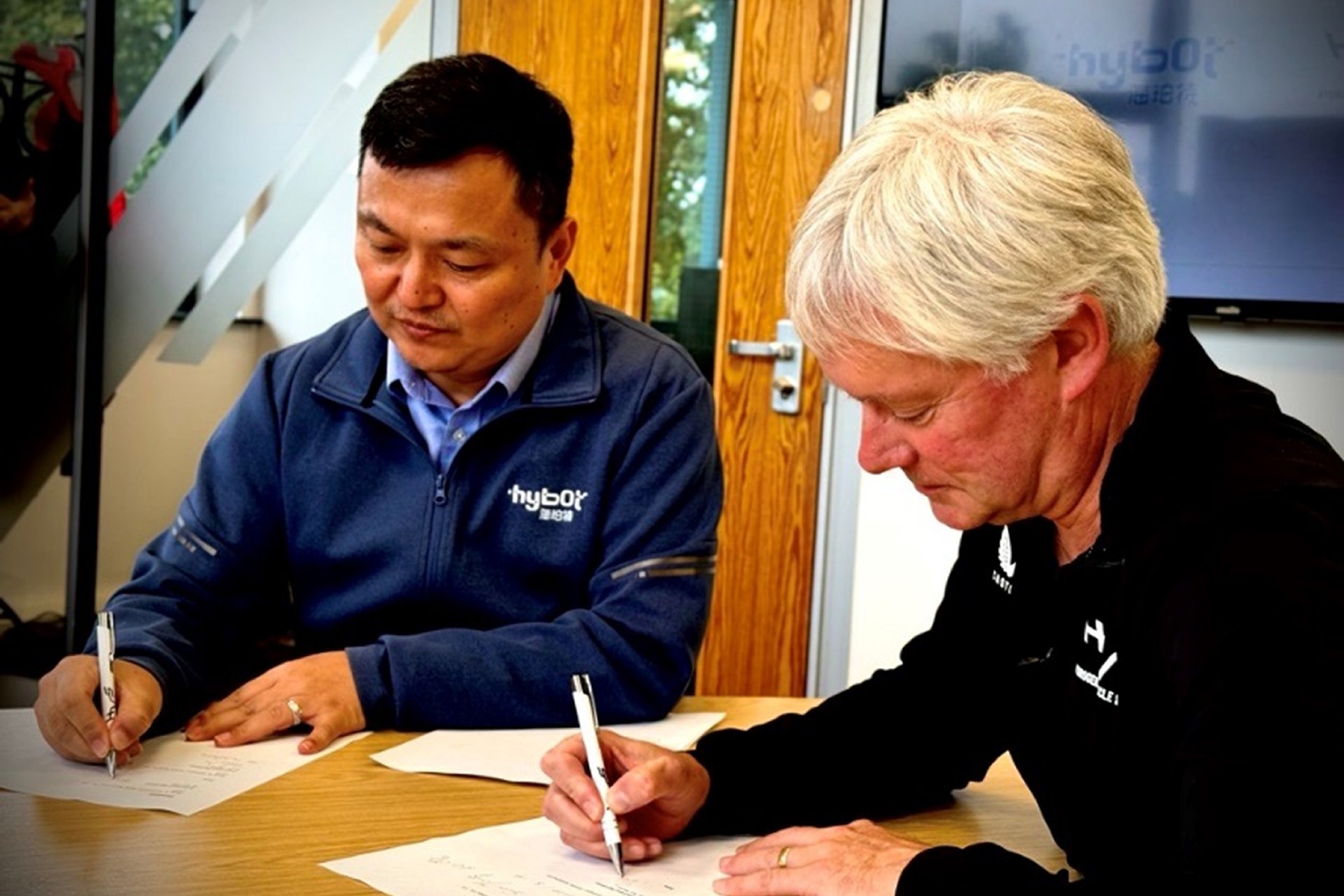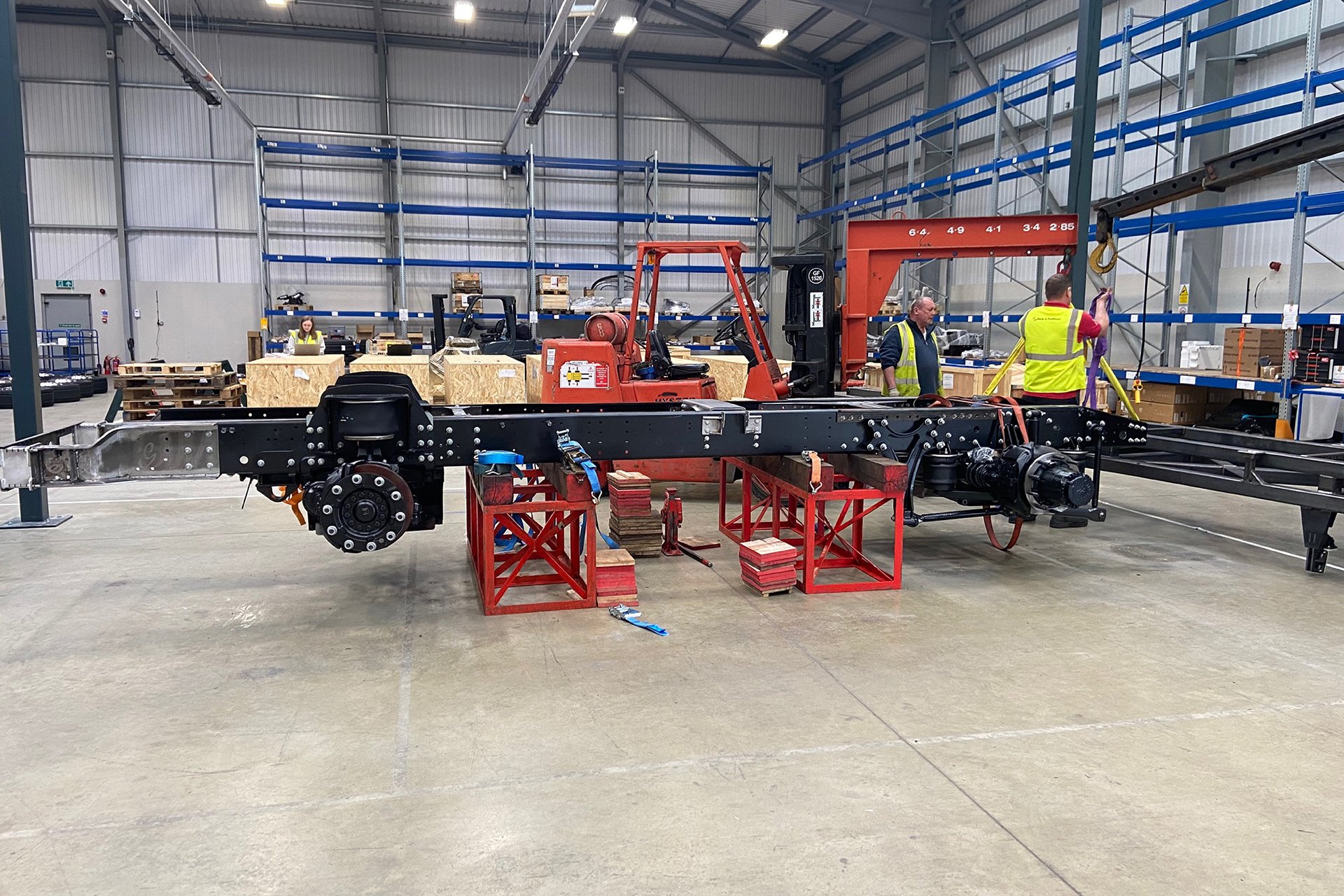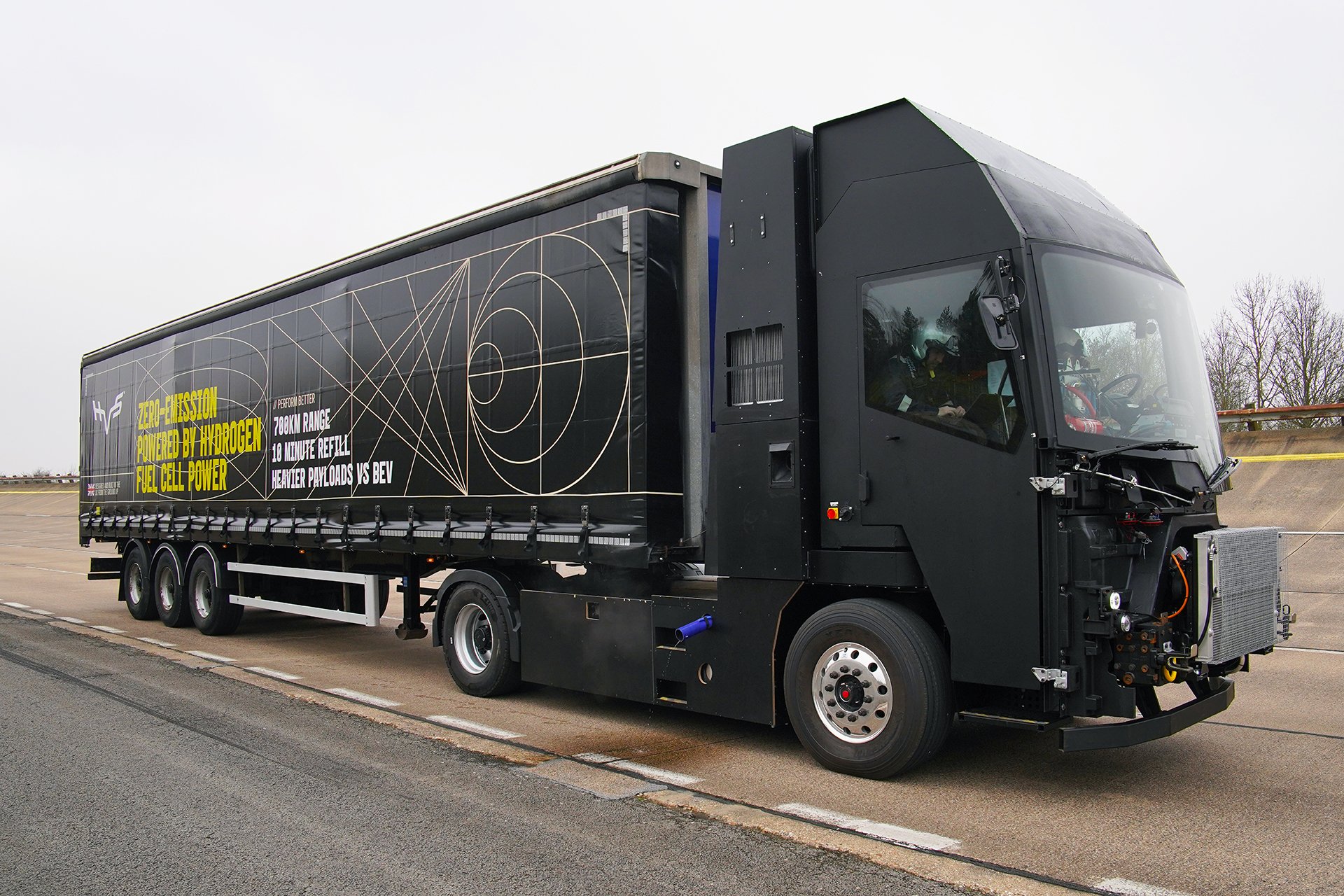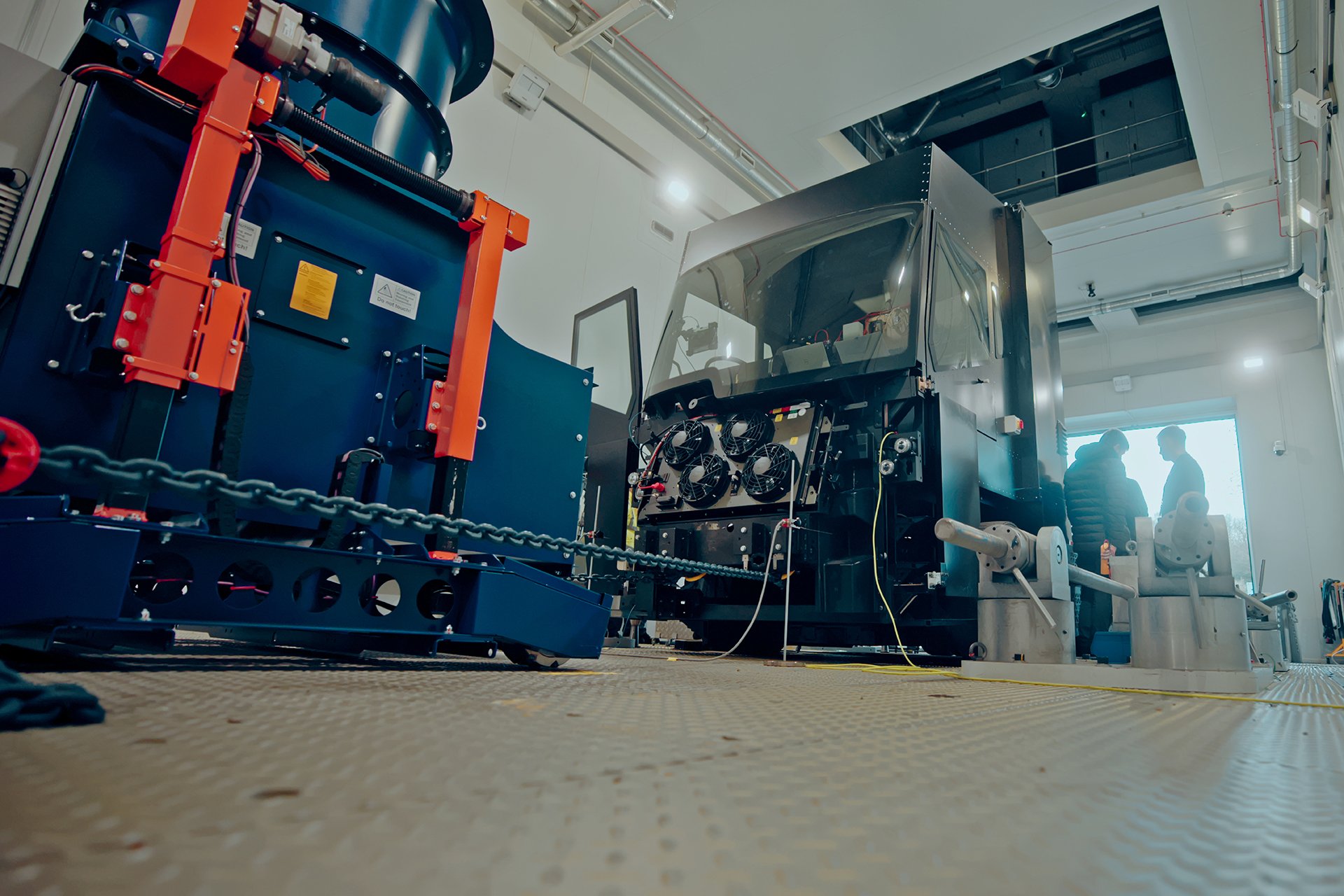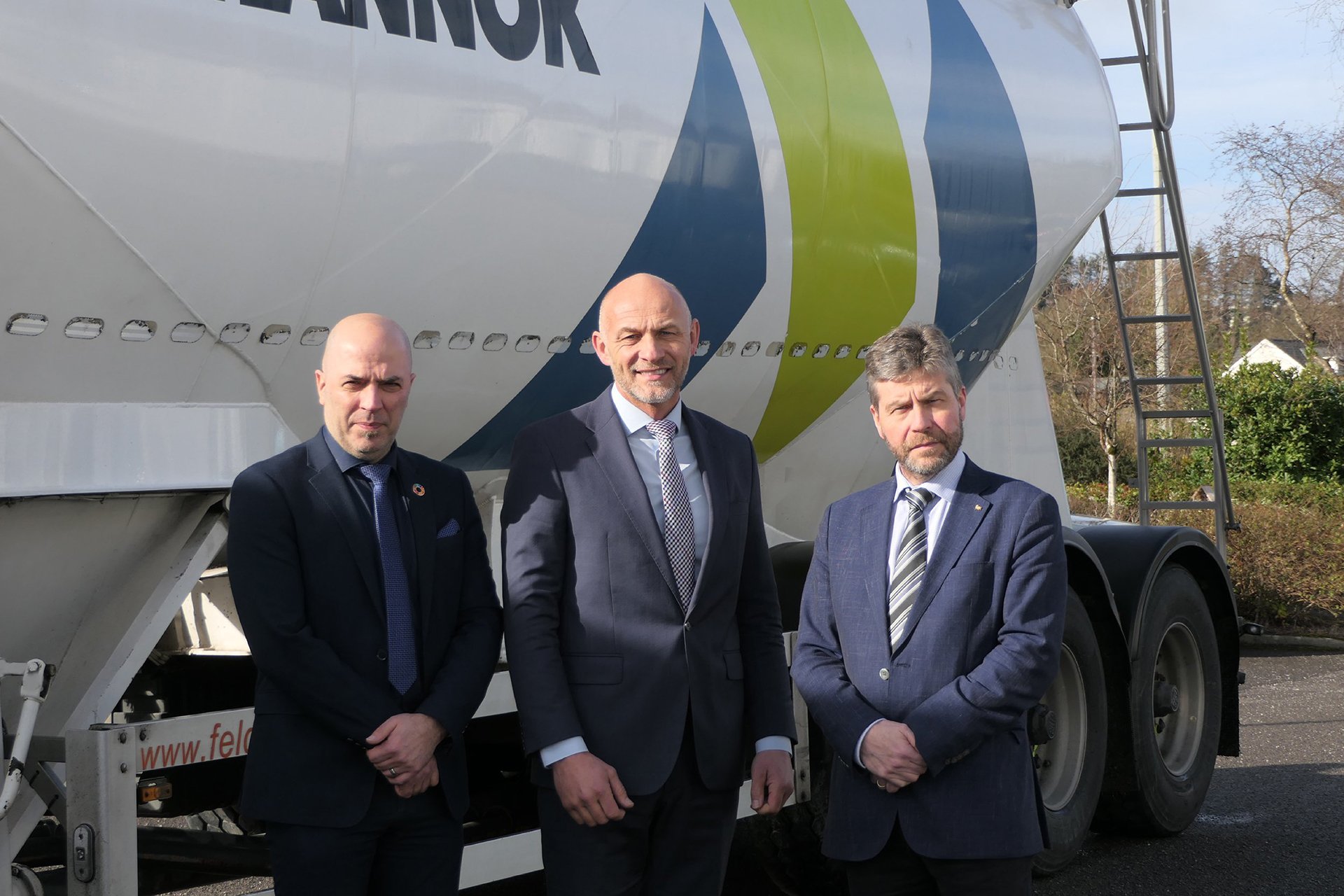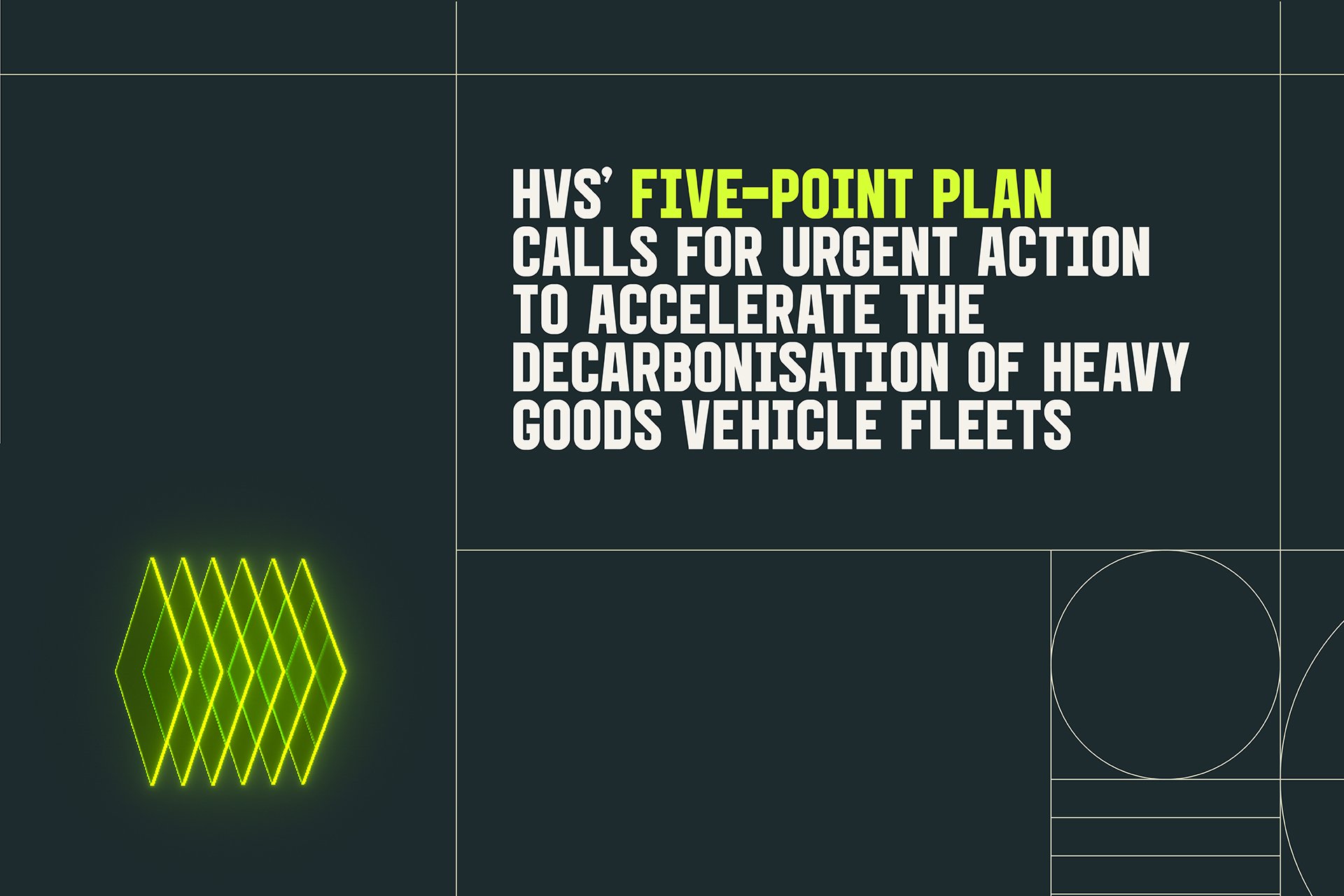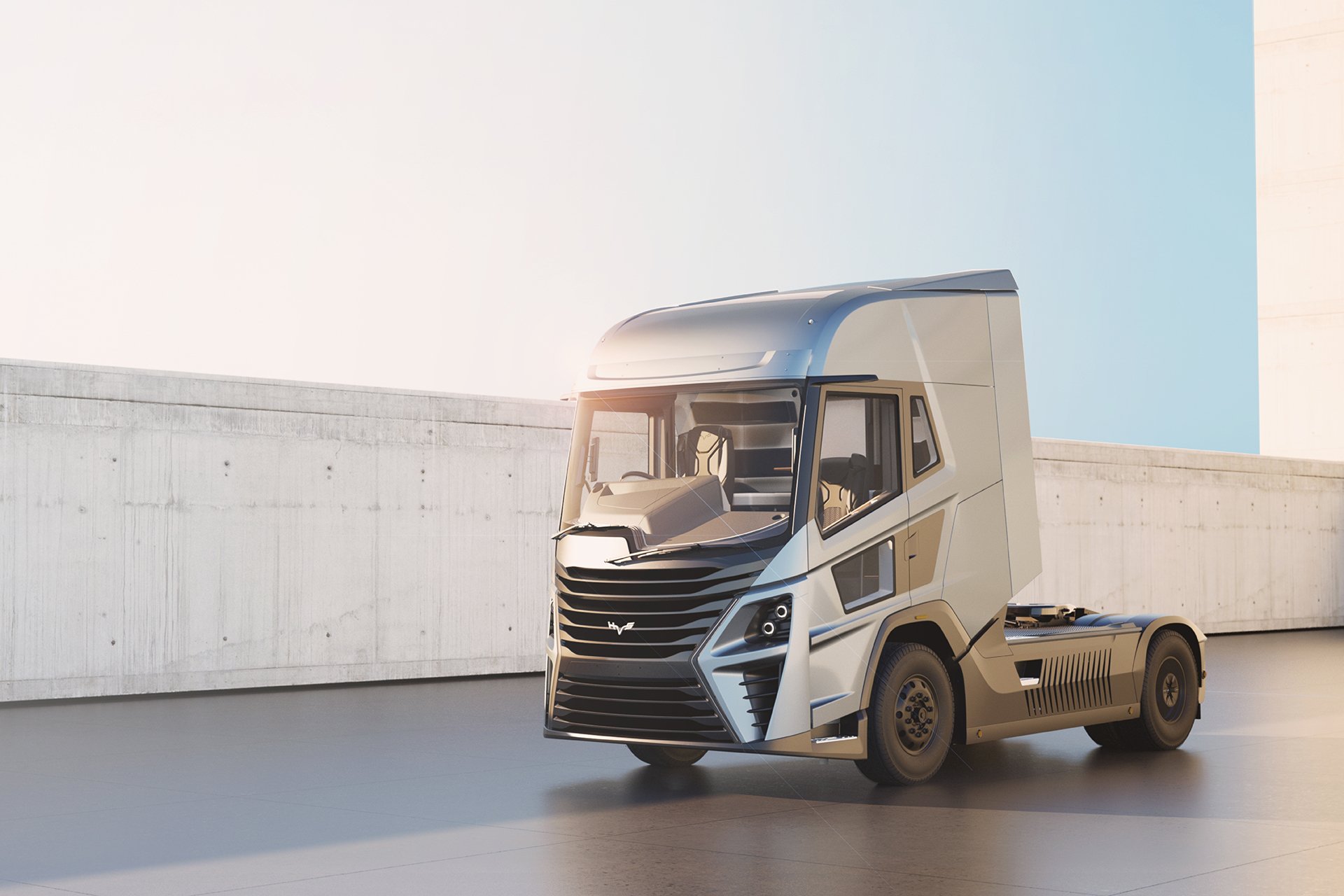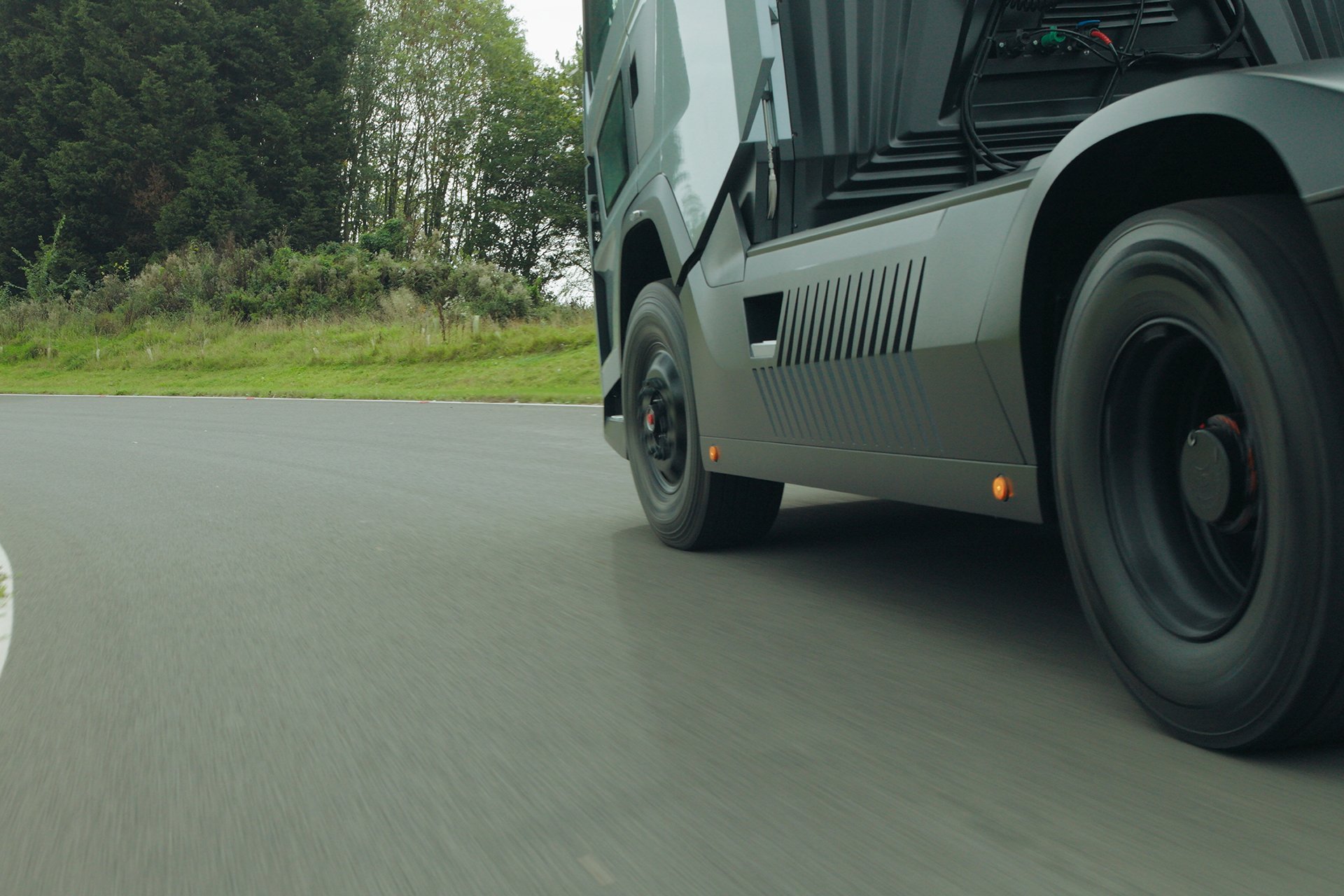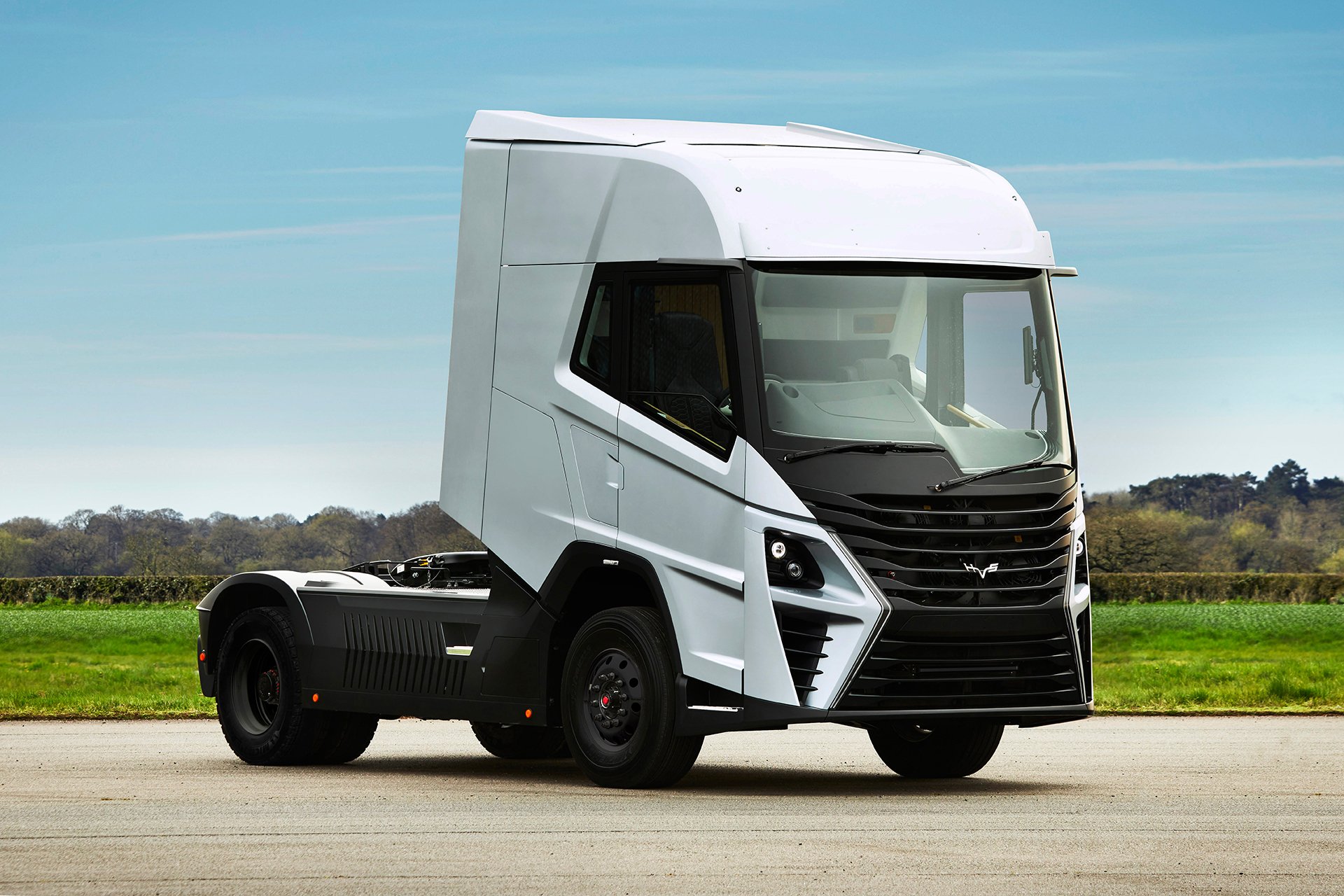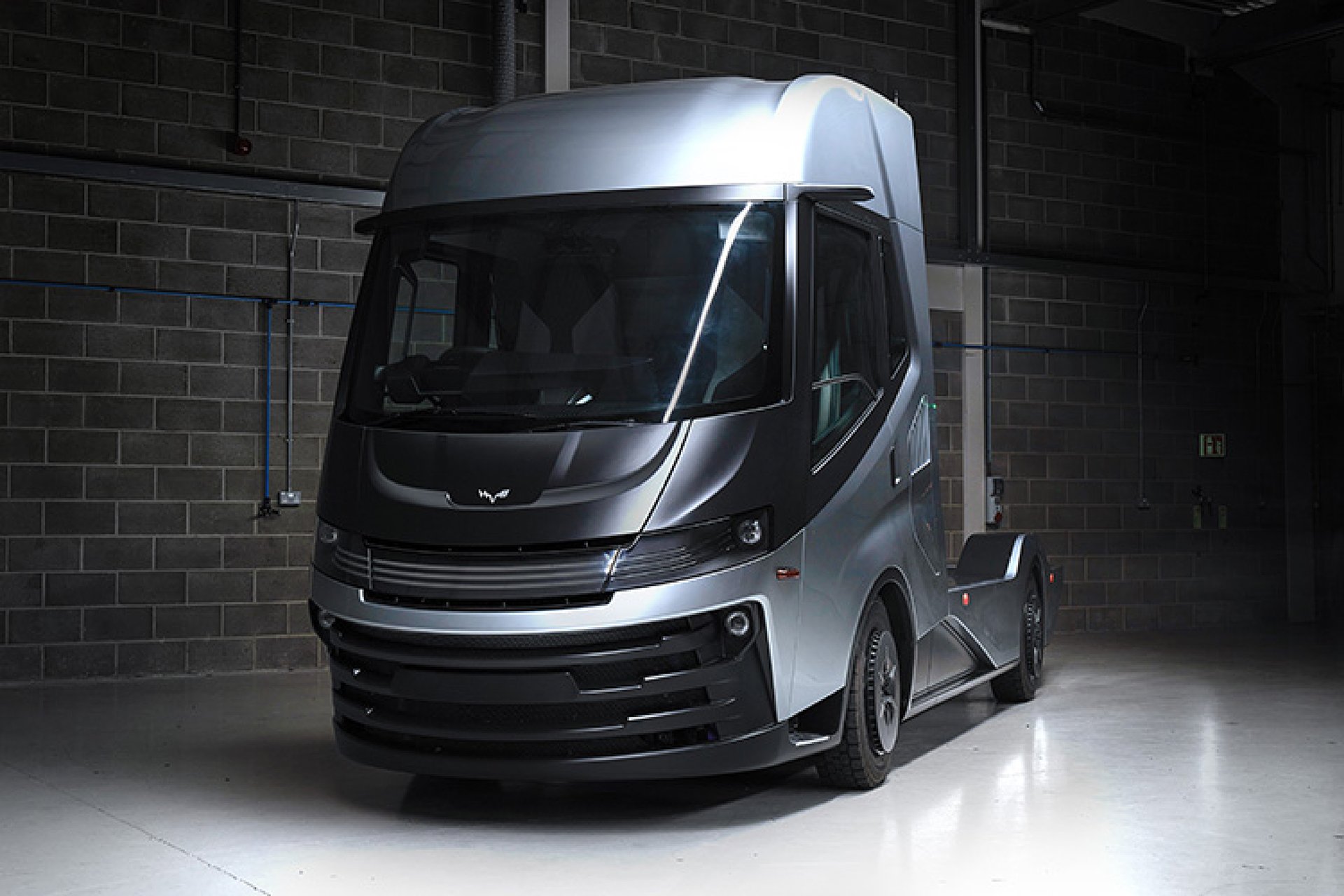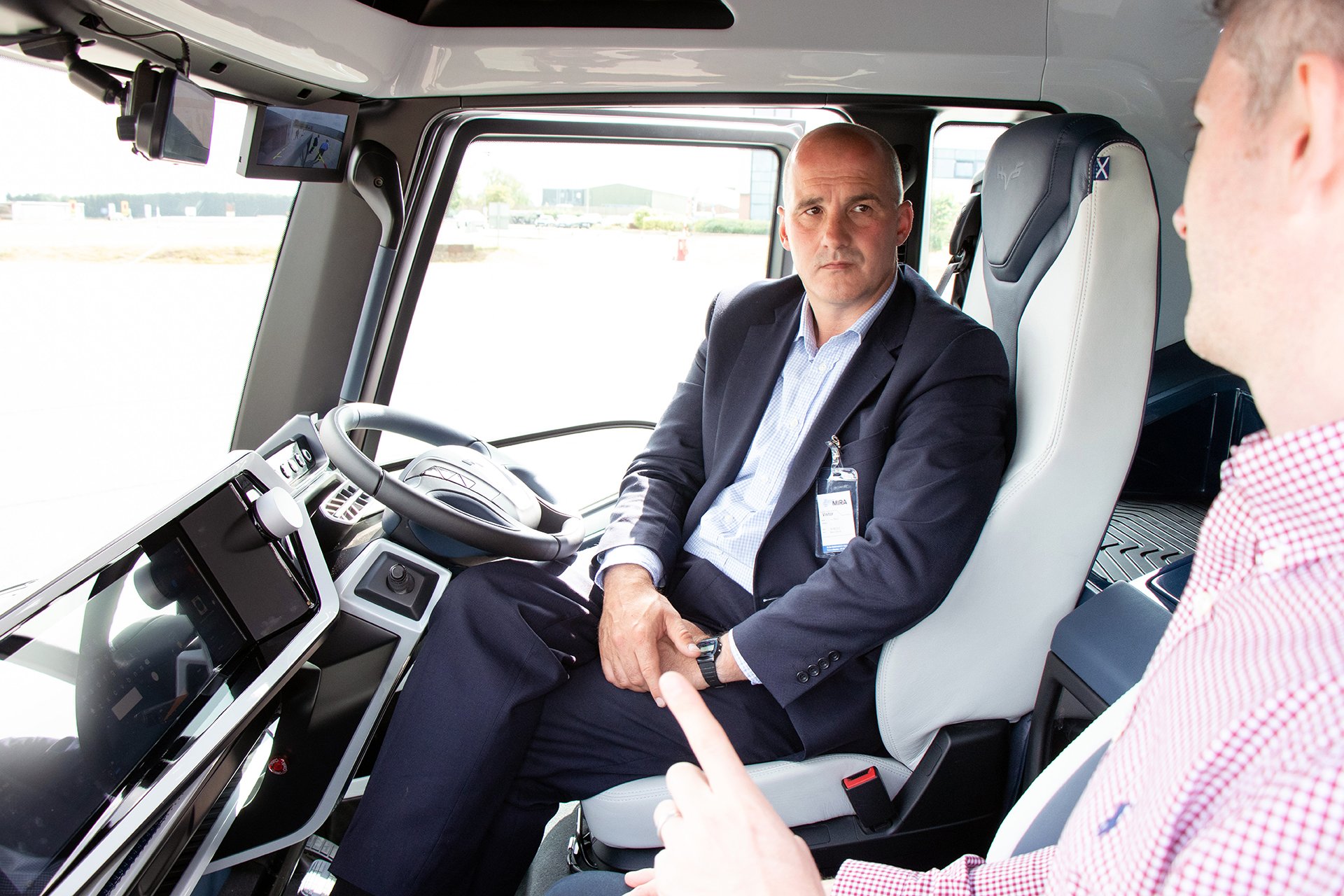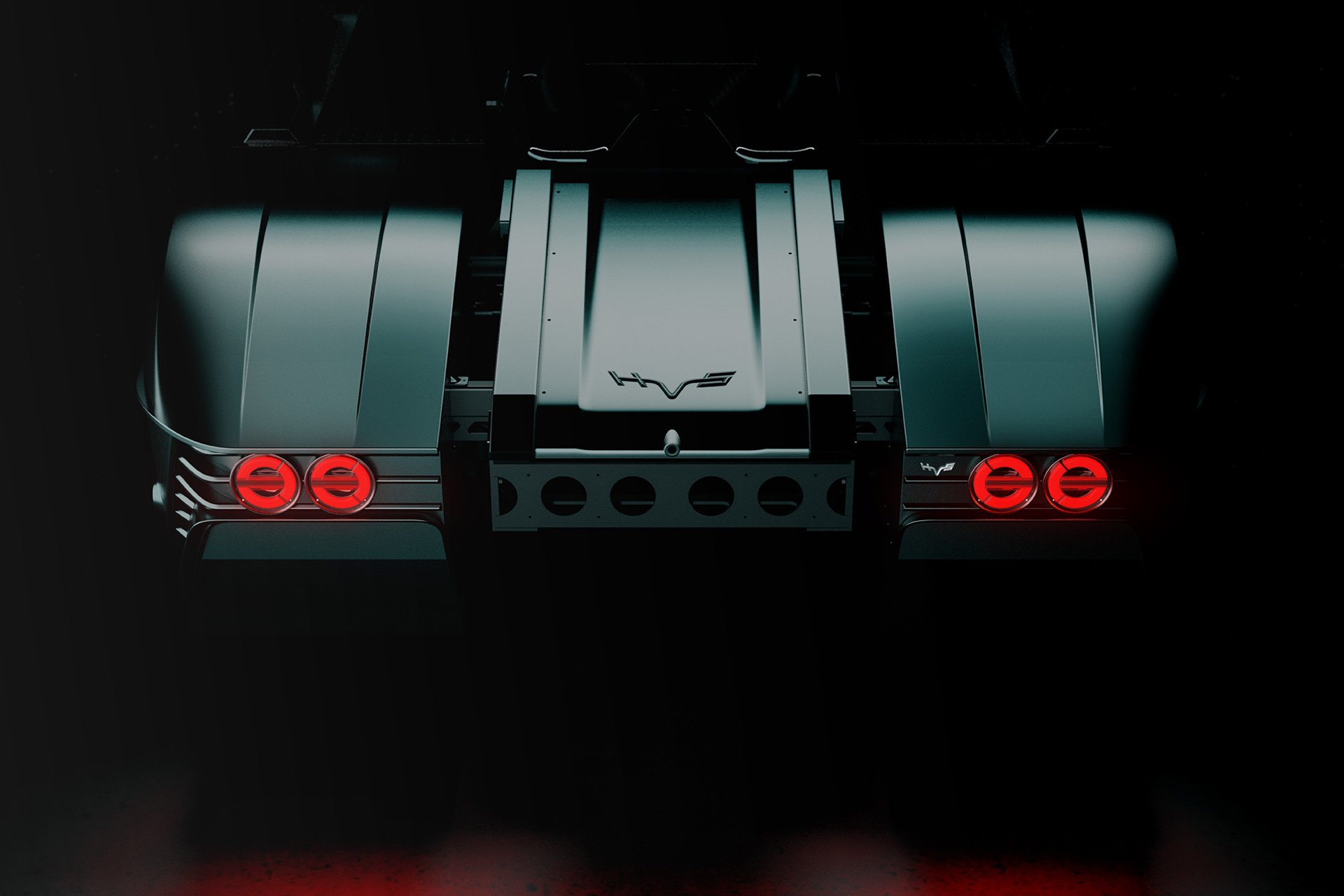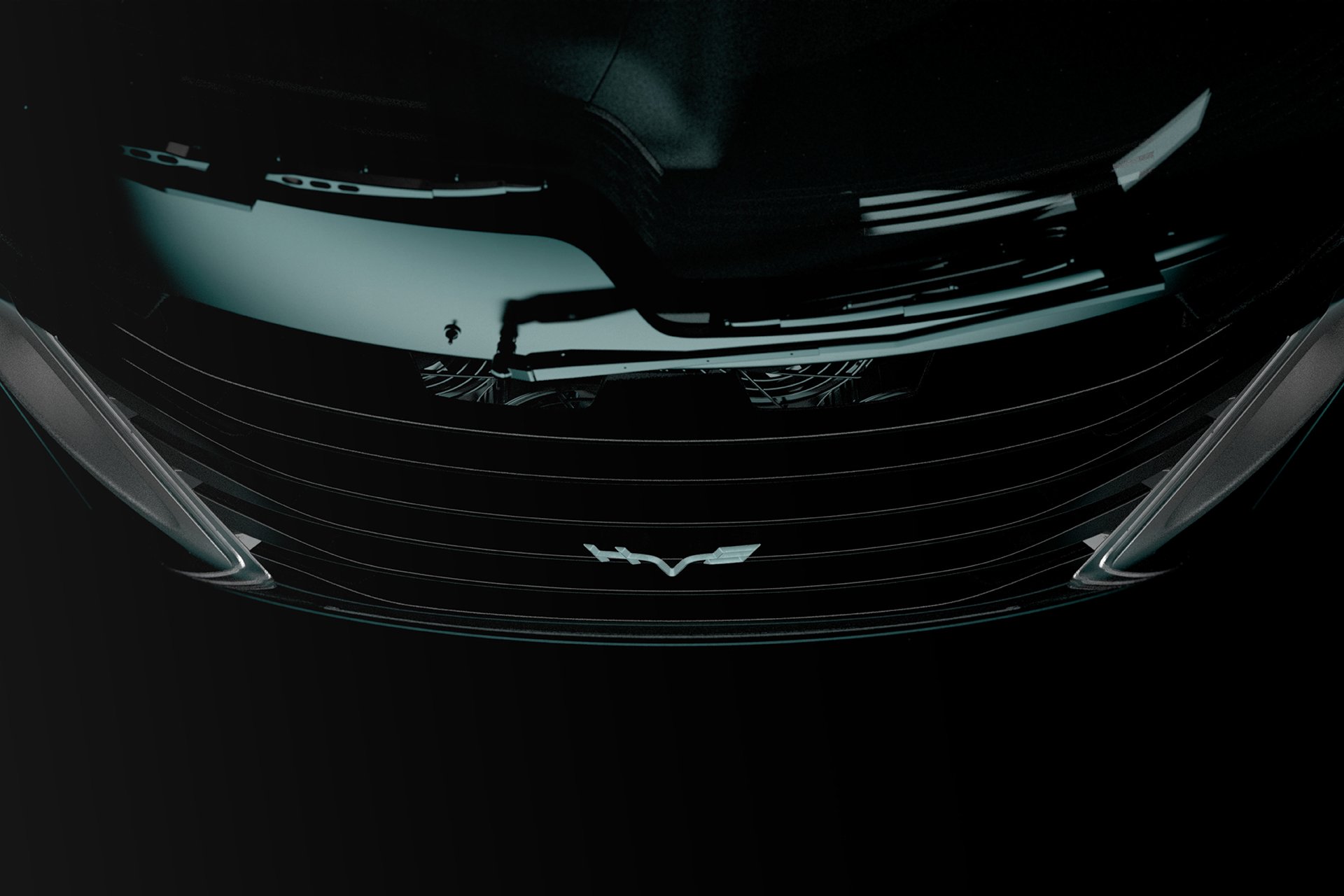RECENT NEWS
news archive
BLOG
MEDIA
View our media area, where you have the ability to download high resolution images ready for use.
faqS
-
Projected production numbers are not being shared publicly at the moment, but we are on course to meet our 2030 targets. At this point, the UK fleet of hydrogen-electric HGVs displacing diesel vehicles could see the elimination of more CO2 and noxious air emissions than the reported annual emissions of Heathrow airport. And that is based on conservative numbers of HGVs being produced by HVS.
-
Initial funding for HVS came via private equity funding. Since then, support from both Scottish Enterprise and Innovate UK has been key in bridging the R&D gap prior to first proof of concept. Subsequent investment has come from EG Group, whose injection of £5m fast-tracked the initial prototypes, followed by a further £25m allowing HVS to progress to the next development stage. EG Group is now a key stakeholder in HVS, and a perfect value-add partner for HVS.
-
EG Group is a very important strategic investor, with a network of 6,600 filling stations globally. They are investing in hydrogen production and distribution, as they want to create a hydrogen ecosystem.
-
We built our first vehicle from a clean sheet of paper to a working prototype in less than 10 months. This is a fully ground-up chassis cab vehicle, featuring complete powertrain, exterior and interior and is a proof of concept, technology demonstrator and investment tool – the first step in our HGV production plan. At the CV show in April 2023 we are unveiling our second technology demonstrator prototype which is a full scale HGV.
-
Battery electric technology works well for smaller automobiles and light commercial vehicles, but they face a number of problems when scaling up to HGVs.
Firstly, the weight of the batteries required to give realistic ranges at the high-power demands needed for HGVs.
Second is the charging time and/or the power demand on charging. Hydrogen FCEV HGVs offer greater range, higher load carrying capacity and quick refuelling.
The performance levels for hydrogen-electric HGVs are comparable to existing diesel HGVs, some of which are double-shifted and are on the road for 16 hours per day covering hundreds of kilometres.
A battery-electric HGV would require around a megawatt hour battery, and to achieve fast charging of around 30min to 70% capacity, it would require a 700kW charger. This is possible for one or two vehicles, but for a fleet of 20 vehicles, for example, it will require a significant investment in charger infrastructure. For a FCEV HGV you need to supply around 50kg of hydrogen to refuel, and it is relatively simple to provide the hydrogen infrastructure for 20 or more HGV vehicles.
-
The current lack of infrastructure is the biggest challenge. However, the use of hydrogen is well-suited to HGVs as the quick refuelling times enable minimal operational upheaval compared to current practices.
Due to commercial vehicles often following set routes or operating on back-to-base refuelling models, far fewer hydrogen refuelling stations are required for HGVs than for private vehicles. As a result, a strategic implementation of a hydrogen refuelling network can be rolled out.
We estimate that as little as seven hydrogen refuelling stations would be required to serve the majority of UK HGV movements.
-
The route to sustainable zero-emissions is to use green hydrogen as a renewable fuel. There is a lot of interest in this. As the amount of renewables on the national grid is increased, then hydrogen technology provides a transportable renewable fuel. The electrolyser technology used to transform renewable electricity into hydrogen is very scalable and can be switched on and off very quickly, and so has a role to play in providing sustainable electricity at scale as the technology acts to stabilise renewable grid output. Using grey or even blue hydrogen is not sustainable. Grey hydrogen is both carbon emitting and non-renewable, while blue hydrogen is non-renewable but can be low carbon, depending on the efficiency of carbon capture and storage.
Petrol and diesel vehicles are simply not sustainable if derived from fossil fuel sources. There are routes to synthetic petrol and diesel, but these are more complex than hydrogen production. Combustion hydrogen has a role to play in vehicles where you need shaft power (such as in a hydraulic excavator) and/or are limited in space. The objection to hydrogen combustion is that you have to be careful not to produce NOx as the combustion process can oxidise atmospheric nitrogen and the combustion efficiency is very low. This is typically around 20% for a combustion vehicle compared to around 46% - 55% for hydrogen fuel cells.
-
We believe it is perfectly possible that battery technology will improve to the point that the weight limitation is not so important, but the amount of electricity needed to charge the vehicle is a fundamental limitation.
-
The components we are outsourcing focus on the individual core systems that have been decades in the making. These include the fuel cell, hydrogen storage system and eAxle. This allows us to maintain our focus as a vehicle manufacturer and de-risk our programme by working with world-leading technology partners.
-
No, this plays no part in our strategy. We will have our own bespoke chassis, removing reliance on supply from an external manufacturer.
We are purposely designing our vehicle around a new powertrain technology, rather than crow-barring new technology into pre-existing vehicles designed for a fundamentally different diesel technology.
-
The average long-distance, long-haul logistics diesel-powered HGV emits around 104 tonnes of CO2eq per year.
Taking HVS’ modest sales projections, we estimate that by 2031 our fleet of vehicles on the UK roads will displace the equivalent diesel trucks and generate cumulative savings of 4.3million tonnes of CO2eq, as well as avoiding 6,817 tonnes of NOx and 170 tonnes of PM (Particulate Matter) emissions, benefiting local air quality as well as this major contribution to carbon reduction targets.
-
Our initial offerings will provide up to 500km in range, but this is set to increase with higher-pressure hydrogen tanks and improvements in technology.
-
HVS undertook a heat map analysis of the UK and estimates that as little as seven strategically positioned refuelling stations could cover the majority of UK logistics movements.
Working with government, infrastructure companies and end-users/operators to roll out this network and aggregate hydrogen, demand is vital to get the ball rolling, but once the network is in place range anxiety is not an issue for hydrogen vehicles.
-
A UK-based production facility.
-
We are aiming to get the first HGVs in customers’ hands by the middle of this decade.
REACH YOUR ZERO-EMISSON GOAL
Want to transform your fleet?



